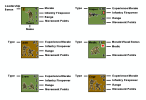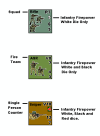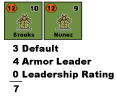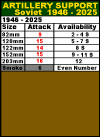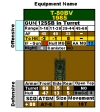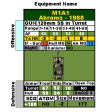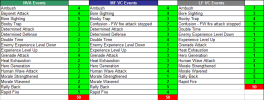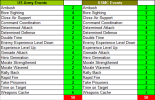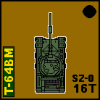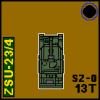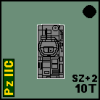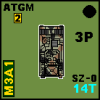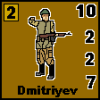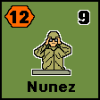Once you calculate the number of orders available to you each side then checks to see the number and size of the Command Points they get.
Command Points are the operational application of the orders you have. It's not as simple as a single order is given in each impulse. That's an extremely fluid situation with very little planning and very much a knee jerk reaction.
Command Points reflect the level of training and the type of tactics a military organization uses. Each organization is different and has a different orders allocation in Command Points. The more flexible the application to the situation the unit is the smaller the size of the Command Point allocations in general.
What does that mean exactly? Let's take the Communist forces in the Warsaw Pact. Nobody has done more studying of WW2 than the Soviet military after it was finished. With good reason; no other country had the losses to life or came so close to being conquered and survive as the Soviet Union. What the Soviets found out is interesting. In a war across Western Germany and Northwestern Europe most actions would be meeting engagements. What are referred to as "ME's". During WW2 the Soviet tactical doctrine was very rigid. This was mostly do to, an early in the war, lack of radios. From that lack of radios orders had to be given that would not have to be adjusted later.
"Take Hill A by 1300 hours."
"Take the schoolhouse in 2 hours."
"Advance and capture the bridge."
Simple orders with little flexibility. They learned how to make that work. It does if you have the manpower to support the system. They did this by having officers mainly lead their small tactical units.
Why then would they keep that system in a more modern setting where they have radios in the same concentration as their opponents? Several reason. Radio intelligence, jamming, simplicity. For a myriad of reasons they have not changed from their WW2 tactical doctrine all that much.
All of which applies to the Soviet Army units. The Soviet recon and special forces are extremely fluid in their tactical doctrine. At least as much as any Western powers military.
Then what about NATO? NATO is a much different beast. Each nation and military organization follows it's own tactical doctrine. Here I'll discuss the US Army only. Since WW2 the US Army has evolved a tactical doctrine of very fluid response with great flexibility at the lower leadership levels. What the US Army has evolved into is a combination of what it was in WW2 and what the German Army was in WW2. The reasons why the German Army didn't collapse during the last 2 years of the war but fought bitterly to the last days was studied in great detail.
What you have now is an overlay of the US system of command and control with the German Army system of small unit tactics. To date this has shown to be an extremely effective tactical doctrine.
As you can see by the two examples below, even when both sides have the same number of orders to give in a turn, the number of Command Points they have and the impulses those generate can differ greatly.
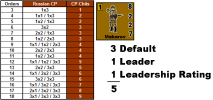
The Soviet Player has 5 orders to give. He will receive a single 2 Command Point chit and a single 3 Command Point chit. That will give him two Command Point chits to be drawn during the turn. It will mean that two of the impulses during the coming turn will be for him to spend his orders.
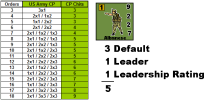
The US Player also has 5 orders. He will receive a single 1 Command Point chit and two 2 Command Point chits. That will give him three Command Point chits to be drawn during the turn. It will mean that three of the impulses during the coming turn will be for him to spend his orders.
The entire turn will be composed of 5 impulses. 2 for the Soviet Player and 3 for the US Player.
